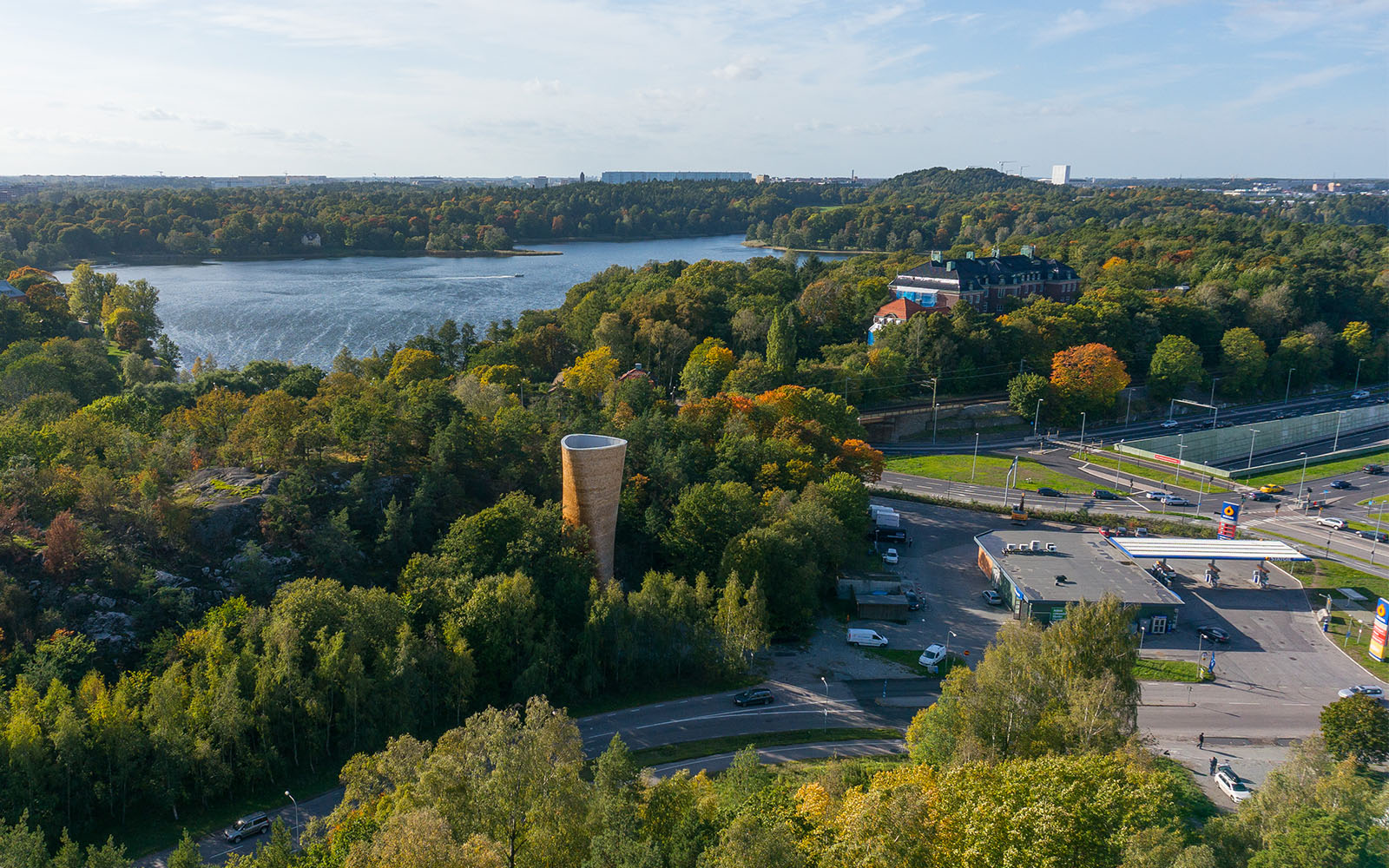

As part of the development of the Northern Link, a new highway connection in Stockholm, &Rundquist has designed two ventilation towers, located in the National City Park in Stockholm.
Their function is to ventilate the air from Northern Link’s traffic tunnel and to reduce the emission levels at its entrances. The tunnels are connected to the corresponding tower by underground ducts. Fans in the channel have been designed to create a specific airflow through the ventilation towers.
The towers are made in wood for a better integration into the park environment while challenging preconceptions about how technological functions are usually designed. The idea of using wood throughout and not just as a cladding material, has a great symbolic value for the Northern Link project.
The construction is 20 meters high and is shaped as a super-triangle that pivots upwards, along its axis. The triangles gets wider as the tower rises to reduce the air resistance at its exit and therefore, optimize the general air flow exhaust. The twist gives the towers sleek lines and an expression that suggests the shape of the air in movement. The towers were parametrically 3d modelled to allow optimization and adjustments throughout the design process. The construction elements, delivered on site, are combined into super-triangles stacked on each other and tensioned together by vertical tie steel rods which are fitted with springs to avoid the structure to get torn when the wood moves.
The towers are clad with horizontal cedar sheets which follow the swiveling shape, accentuate the sculptural impression and create a varied image that change over time and with the viewing angle.
The towers were nominated to Träpriset 2015.
As part of the development of the Northern Link, a new highway connection in Stockholm, &Rundquist has designed two ventilation towers, located in the National City Park in Stockholm.
Their function is to ventilate the air from Northern Link’s traffic tunnel and to reduce the emission levels at its entrances. The tunnels are connected to the corresponding tower by underground ducts. Fans in the channel have been designed to create a specific airflow through the ventilation towers.
The towers are made in wood for a better integration into the park environment while challenging preconceptions about how technological functions are usually designed. The idea of using wood throughout and not just as a cladding material, has a great symbolic value for the Northern Link project.
The construction is 20 meters high and is shaped as a super-triangle that pivots upwards, along its axis. The triangles gets wider as the tower rises to reduce the air resistance at its exit and therefore, optimize the general air flow exhaust. The twist gives the towers sleek lines and an expression that suggests the shape of the air in movement. The towers were parametrically 3d modelled to allow optimization and adjustments throughout the design process. The construction elements, delivered on site, are combined into super-triangles stacked on each other and tensioned together by vertical tie steel rods which are fitted with springs to avoid the structure to get torn when the wood moves.
The towers are clad with horizontal cedar sheets which follow the swiveling shape, accentuate the sculptural impression and create a varied image that change over time and with the viewing angle.
The towers were nominated to Träpriset 2015.